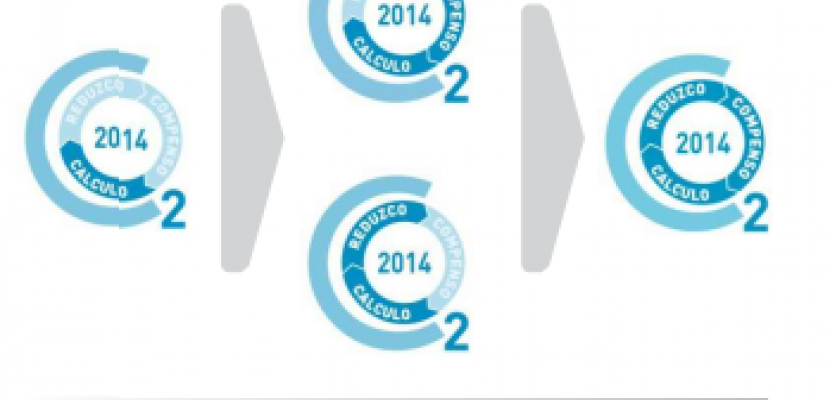Image

National Registry of Carbon Footprint (CF), CO2 compensation, and CO2 absorption projects
Published on 29 November 2021

Spain
This is the good practice's implementation level. It can be national, regional or local.
About this good practice
The Registry, created by Royal Decree 163/2014, includes the efforts of Spanish organizations in the calculation and reduction of greenhouse gas (GHG) emissions generated by their activity.
Individually, it is a good tool to help organizations to monitor and reduce GHG emissions.
At the same time, it facilitates the possibility of offsetting all or part of their CF, through a series of forestry projects located throughout the national territory. These projects integrate numerous environmental and social benefits, among which are the absorption of carbon dioxide from the atmosphere, also known as carbon sequestration.
It is organized in 3 sections:
A. CF and GHG reduction commitment section: organizations calculate and reduce their carbon footprint every year
B. CO2 sequestration projects section: forestry projects that increase CO2 sequestration
C. CF offsetting section: organizations offset by acquiring CO2 sequestrated by forestry projects
The organizations who calculate their CF and establish a reduction plan, can register in section A. In the same way, if these organizations wish to offset their CF, it can be done through agroforestry carbon-sink projects in Spain, that would be registered in section B of the Registry. Finally, section C checks such offsetting and gives institutional backing.
The organizations registered in the CF section and reduction and / or compensation commitments may use a seal of ownership of the Ministry.
Individually, it is a good tool to help organizations to monitor and reduce GHG emissions.
At the same time, it facilitates the possibility of offsetting all or part of their CF, through a series of forestry projects located throughout the national territory. These projects integrate numerous environmental and social benefits, among which are the absorption of carbon dioxide from the atmosphere, also known as carbon sequestration.
It is organized in 3 sections:
A. CF and GHG reduction commitment section: organizations calculate and reduce their carbon footprint every year
B. CO2 sequestration projects section: forestry projects that increase CO2 sequestration
C. CF offsetting section: organizations offset by acquiring CO2 sequestrated by forestry projects
The organizations who calculate their CF and establish a reduction plan, can register in section A. In the same way, if these organizations wish to offset their CF, it can be done through agroforestry carbon-sink projects in Spain, that would be registered in section B of the Registry. Finally, section C checks such offsetting and gives institutional backing.
The organizations registered in the CF section and reduction and / or compensation commitments may use a seal of ownership of the Ministry.
Expert opinion
The creation of a central registry covering the entire territory (in this case the whole country of Spain) with an inventory of carbon footprint projects of public administrations is a useful initiative as it helps organizations to monitor and reduce GHG emissions. It makes it easier for the administrations to understand their carbon footprint and establishes a common methodology. Linking this registry with possible carbon footprint offsetting measures in form of forestation projects in the territory makes it easy to select an offsetting project. The initiative is conductive to fostering the decarbonisation of the European economy in line with the Green Deal.
Works at
Interreg Europe Policy Learning Platform
Resources needed
Inscriptions in the Registry are free. The creation of the Registry does not imply an increase in spending, nor it requires an increase in provision, or remuneration, or other personal expenses.
Electronic communication systems are provided for the resolution of doubts about the registration.
Electronic communication systems are provided for the resolution of doubts about the registration.
Evidence of success
The number of inscriptions in the different sections of the voluntary Registry at the end of 2020 was: 3.241 in Section A, with 1.389 organizations registered; 63 in Section B; 146 in Section C. Total number of inscriptions: 3.450.
Total absorptions available at the start of projects: 36.360 tCO2
CO2 tons offset: 6.244
Number HC in the register by type of seal: “I calculate” 2.666; “I calculate and I compensate” 63; I calculate and I reduce” 442; “I calculate, I reduce, I compensate” 70.
Total absorptions available at the start of projects: 36.360 tCO2
CO2 tons offset: 6.244
Number HC in the register by type of seal: “I calculate” 2.666; “I calculate and I compensate” 63; I calculate and I reduce” 442; “I calculate, I reduce, I compensate” 70.
Potential for learning or transfer
This good practice may be applicable in every country/region. The register may be created by a legal instrument, to gather, on a voluntary basis, the efforts of national/regional companies, administrations and other organizations in the calculation, reduction, and compensation of GHG emissions generated by their activity. It also can gather a portfolio of forestry projects with which these organizations can offset their footprint.
The seals that organizations get to join this initiative could be used as award criteria for public procurements.
The seals that organizations get to join this initiative could be used as award criteria for public procurements.
Further information
Website
Good practice owner
You can contact the good practice owner below for more detailed information.
Organisation
Ministry for Ecological Transition and Demographic Challenge

Spain
Comunidad de Madrid
Contact
PROJECT MANAGER
